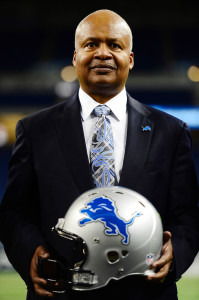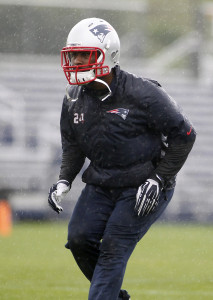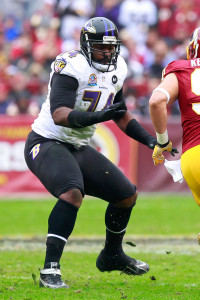Notable signings:
- Sam Shields (CB): Four years, $39MM. $12.5MM guaranteed.
- Julius Peppers (DE/OLB): Three years, $26MM. $7.5MM guaranteed.
- Mike Neal (DE/OLB): Two years, $8MM. $2.5MM guaranteed.
- James Starks (RB): Two years, $3.25MM. $725K guaranteed.
- B.J. Raji (DT): One year, $4MM. $500K guaranteed.
- Andrew Quarless (TE): Two years, $3MM. $350K guaranteed.
- John Kuhn (FB): One year, $1.03MM. $100K guaranteed.
- Letroy Guion (DT): One year, $985K. $100K guaranteed.
- Matt Flynn (QB): One year, $1MM. $75K guaranteed.
- Jamari Lattimore (LB): One year, $1.431MM. Accepted RFA tender.
- Michael Hill (RB): One year, minimum salary.
Notable losses:
- Victor Aiyewa (LB): Waived
- Kahlil Bell (RB)
- Evan Dietrich-Smith (C)
- Jermichael Finley (TE)
- Rob Francois (LB)
- Johnathan Franklin (RB): Retired due to injury
- M.D. Jennings (S)
- Johnny Jolly (DL)
- James Jones (WR)
- Marshall Newhouse (OT)
- Ryan Pickett (DL)
- Greg Van Roten (OL): Waived
- Seneca Wallace (QB)
- C.J. Wilson (DE)
Draft picks:
- Ha Ha Clinton-Dix, S, Alabama (1.21): Signed
- Davante Adams, WR, Fresno State (2.53): Signed
- Khyri Thornton, DT, Southern Miss (3.85): Signed
- Richard Rodgers, TE, California (3.98): Signed
- Carl Bradford, OLB, Arizona State (4.121): Signed
- Corey Linsley, C, Ohio State (5.161): Signed
- Jared Abbrederis, WR, Wisconsin (5.176): Signed
- Demetri Goodson, CB, Baylor (6.197): Signed
- Jeff Janis, WR, Saginaw Valley State (7.236): Signed
Other:
- Declined Derek Sherrod‘s fifth-year option for 2015 ($7.438MM).
- Received two compensatory draft picks.
- Signed 14 rookie free agents after the draft.
The Packers’ 2013 season was going smoothly until Week 9, when Aaron Rodgers sustained a broken collarbone. Including the ensuing loss to the Bears, the Packers proceeded to utterly collapse, going on a 2-5-1 stretch that featured a tie with a cellar-dwelling Vikings team. During the slide, Rodgers was replaced by the likes of Seneca Wallace, practice squad call-up Scott Tolzien, and Matt Flynn, whose career with the Packers had been interrupted by quick, subsequent stints with the Seahawks, Raiders, and Bills. A triumphant return from Rodgers in the team’s Week 17 matchup against the Bears culminated with the former MVP’s touchdown pass to Randall Cobb in the last minute of the game, which not only provided one of the most iconic plays of the 2013 season — it also sent the 8-7-1 Packers to the playoffs. A hard-luck Wild Card qualifier, the 12-4 49ers, traveled to Green Bay and narrowly defeated the Packers, sending them into the offseason with bright prospects for 2014.
On offense, Rodgers continued to solidify himself as one of the elite quarterbacks in the NFL while one of his receivers – Cobb – stepped into Greg Jennings‘ vacated spotlight and emerged as one of the league’s most special talents. Jordy Nelson, James Jones, and late-season revelation Jarrett Boykin rounded out one of the best receiving corps in the NFC. On the ground, rookie running back Eddie Lacy proved to be more than worth the second-round pick that the Packers spent on him last Spring. To add to the rushing attack, Lacy was effectively spelled by veteran James Starks.
Defensively, the team struggled after GM Ted Thompson had failed to address what many considered to be the team’s primary need during the 2013 offseason: a new safety. The unit performed poorly across the board, finishing 24th in pass defense and 25th in rush defense. The team’s once-feared multi-level tandem of B.J. Raji and A.J. Hawk were shadows of their former selves in Dom Capers‘ 3-4 base defense. Clearly, most of Green Bay’s needs heading into the 2014 offseason were on the defensive side of the ball.
Thompson’s defensive moves this offeason started with his decision to stand by Capers, instead making changes at the player level. Substantial help arrived for Capers’ unit via both free agency and the draft. Thompson went out and signed superstar defensive end Julius Peppers, who, despite being past his peak, still presents a significant threat along the line. As talented as he is, Peppers’ fit into the 3-4 – a formation he’s yet to encounter in the NFL – will be something to watch during the 2014 season.
In the draft, the Packers’ were delighted to have Ha Ha Clinton-Dix, the consensus All-American safety from Alabama, fall to them at 21st overall in the first round. Clinton-Dix will look to step in and start immediately in a secondary that badly needed the help. The club also managed to re-sign by far the most valuable member of that secondary, cornerback Sam Shields, and added depth to the interior of the defensive line, retaining the fast-fading Raji and bringing Letroy Guion to back up Raji at nose tackle.
Offensively, the Packers made up ground in some areas and appeared to take steps backward in others. Although they lost Jones via free agency, the receiving corps was refurbished in the draft with wide receivers Davante Adams, Jared Abbrederis, and Jeff Janis, along with tight end Richard Rogers. This receiving-heavy rookie class has the potential to blossom into the next great generation of Packers’ pass catchers, who have benefited from the signal-calling of Brett Favre and Aaron Rodgers.
Up front, Thompson raised several eyebrows by not re-signing center Evan Dietrich-Smith, who had been publicly endorsed by Rodgers heading into the offseason. Second-year center J.C. Tretter, who once played tight end at Cornell, will look to fill the void left by Dietrich-Smith. The Packers also received some big help along the o-line with the return of tackle Bryan Bulaga, who tore his ACL last August.
The Packers will head into the season as favorites to make the playoffs out of the NFC North. Any competent team led by Rodgers has the potential to win a Super Bowl. Throw in a potential juggernaut offensive cast around Rodgers and an improved, passable defense, and it’s easy to see why many consider the Packers to be one of the best teams in the NFC heading into the 2014 season. Because they must play the AFC East and NFC South, two relatively top-heavy divisions that will likely produce a few particularly tough match-ups, 12 wins and another NFC North title seems a fair prediction for the Packers.
Spotrac and Over The Cap were used in the creation of this post.








